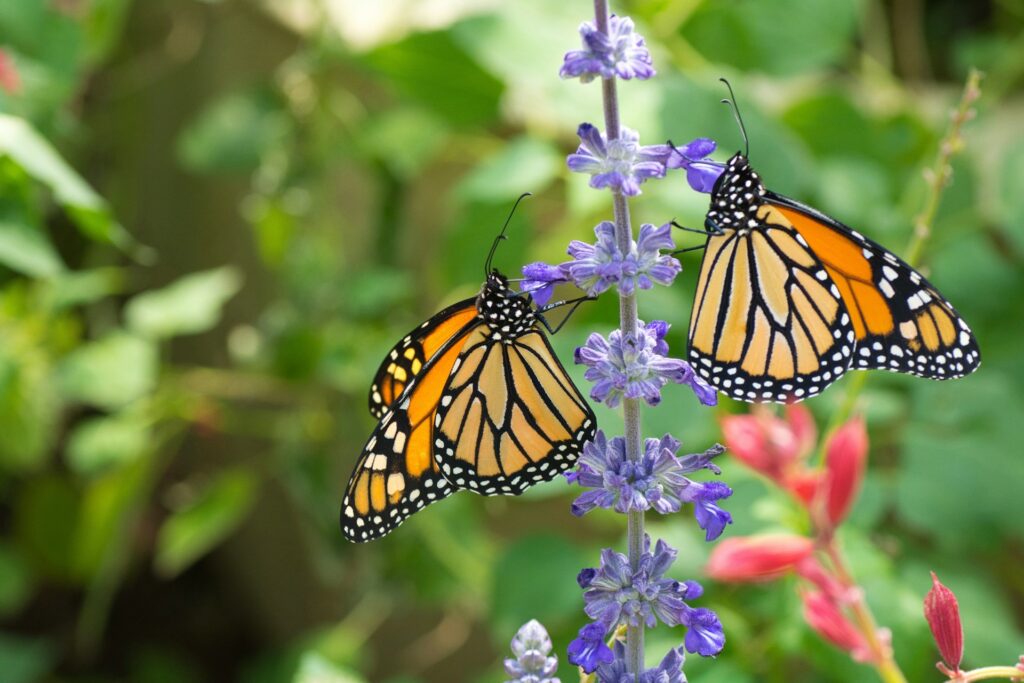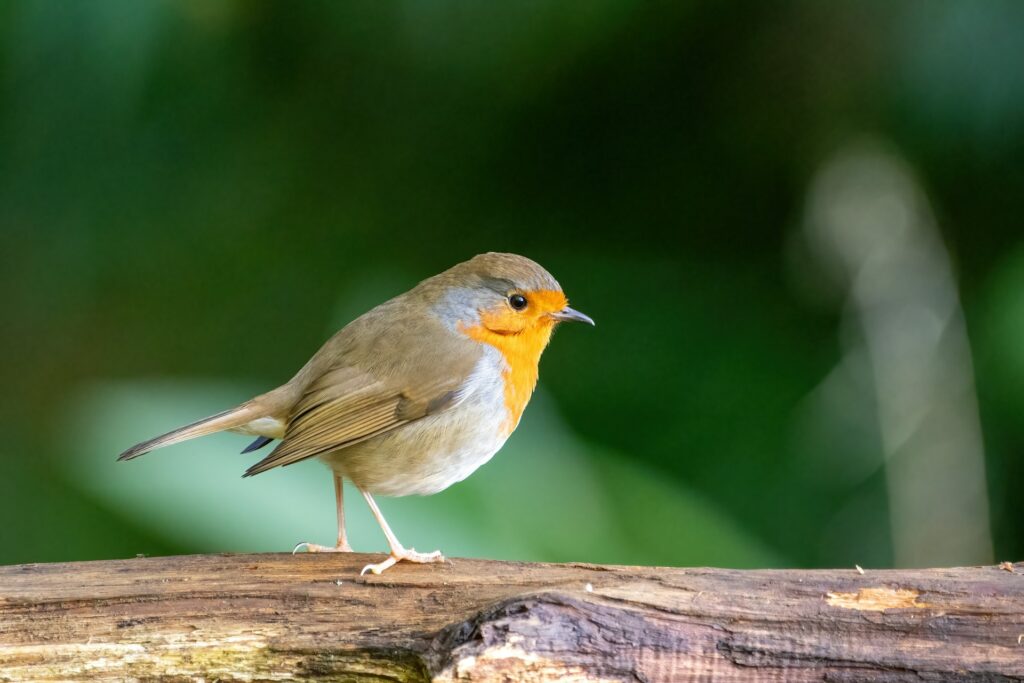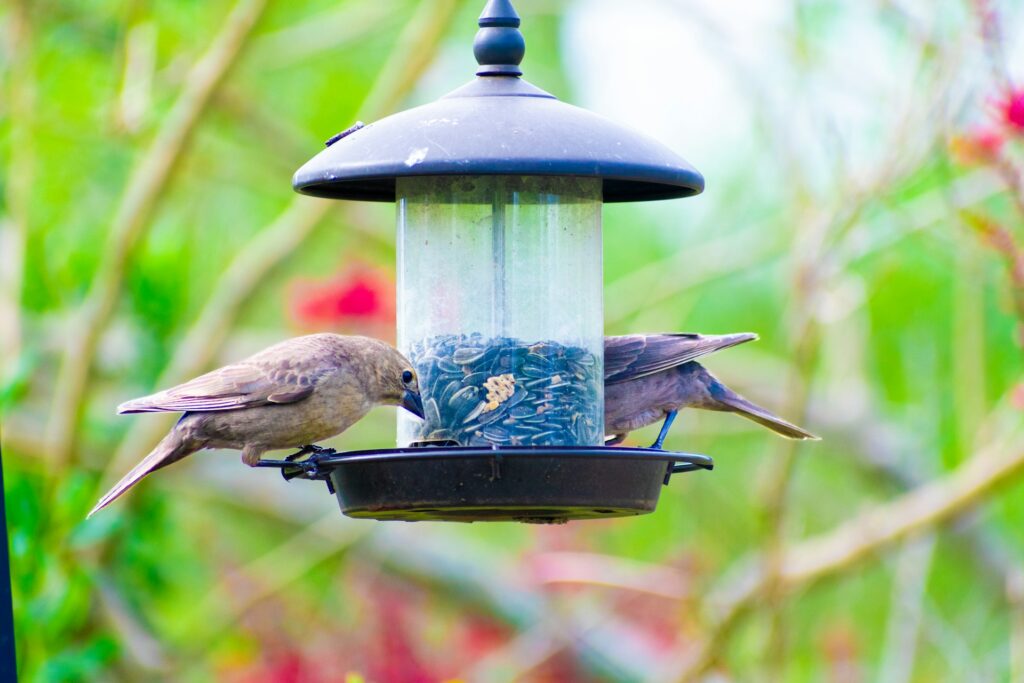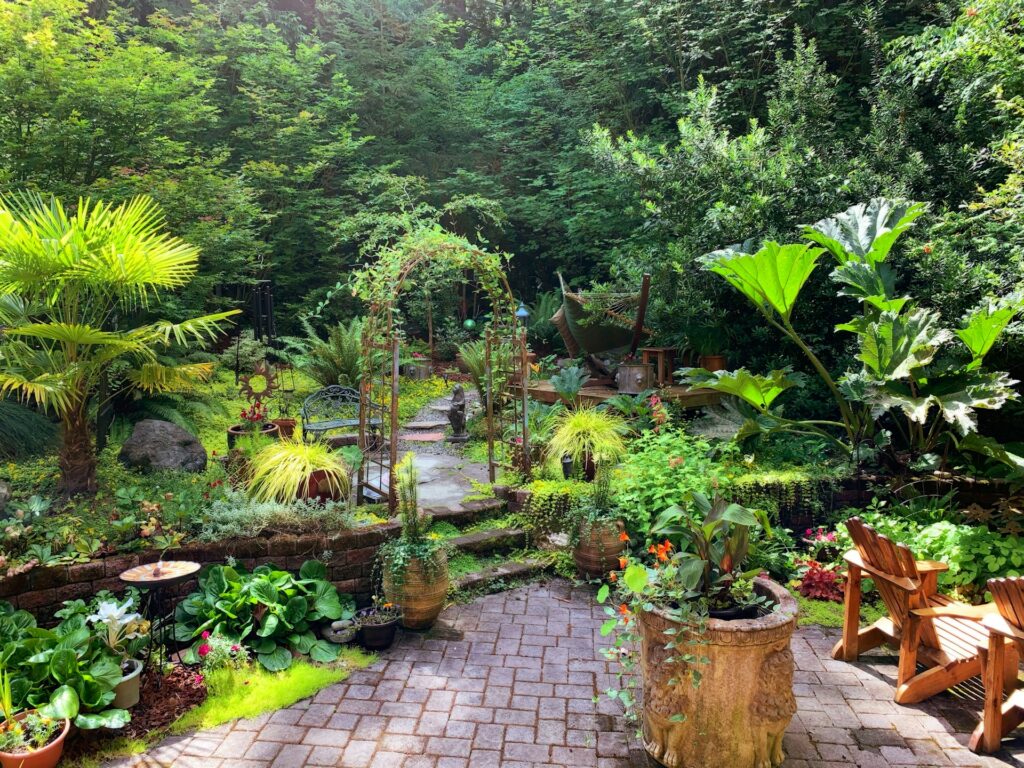Gardens are often seen as private spaces — places for relaxation, recreation, or growing food.

However, with habitat loss and biodiversity decline accelerating worldwide, gardens can be so much more. When designed thoughtfully, even small patches of green can become vital refuges for birds, bees, butterflies, hedgehogs, and countless other species struggling to survive in an increasingly urbanised world.
In the UK alone, private gardens cover more than 400,000 hectares — more space than all the country’s nature reserves combined, according to the Royal Horticultural Society. Making these spaces wildlife-friendly isn’t just a nice idea; it’s an essential part of broader conservation efforts. As climate change accelerates and natural habitats continue to shrink, our gardens are increasingly stepping in as crucial lifelines for a huge array of wildlife. Here’s how to make yours more of a refuge.
Rethink your lawn.

Traditional lawns are often biodiversity deserts. They require regular mowing, fertilising, and sometimes pesticide use, all of which reduce their value to wildlife. Keeping a pristine green lawn might look nice to us, but for most species, it offers little in the way of shelter or sustenance.
One of the easiest ways to help is to mow less. Letting patches of grass grow long encourages wildflowers like clover, daisies, and buttercups to appear, providing vital food for pollinators. Even setting aside a small “wild patch” in a corner of your garden can make a huge difference.
Schemes like No Mow May encourage gardeners to delay mowing until later in the season, helping bees, butterflies, and beetles thrive. Leaving the grass long into summer also provides important cover for small mammals and insect larvae.
If you’re feeling more adventurous, consider creating a full wildflower meadow. Even small-scale versions can dramatically increase the diversity of insects visiting your garden.
Plant for pollinators.

Bees, butterflies, and other insects are in decline globally, and one of the biggest reasons is the loss of flowering plants. Choosing the right plants can turn your garden into a vital food source and help halt the trend.
Focus on native species wherever possible. Native plants have evolved alongside local wildlife and offer better-quality nectar and pollen than many ornamental exotics. Plants like foxglove, knapweed, cowslip, lavender, marjoram, and single-flowered varieties of roses and dahlias are excellent choices.
Aim for a variety of plants that flower at different times of year to provide a continuous supply of nectar from early spring to late autumn. Early sources like crocus and lungwort are crucial for emerging bees, while late-bloomers like ivy flowers support pollinators preparing for winter.
Avoid pesticide use altogether. Even products labelled “bee-friendly” can sometimes contain harmful substances. Instead, manage pests naturally by encouraging predatory insects such as ladybirds and lacewings.
Create shelter and nesting spaces.

Animals need more than food — they need safe, reliable places to hide, breed, and shelter from predators and bad weather. Making your garden welcoming to wildlife means thinking vertically as well as horizontally.
Log piles: Rotting wood is a haven for beetles, fungi, and small mammals. Piles of logs left in a shady corner will attract a whole host of life.
Rockeries and dry-stone walls: These structures provide shelter for amphibians like frogs and newts, as well as invertebrates.
Native hedges: Hedges of hawthorn, blackthorn, hazel, and dog rose offer nesting sites for birds and act as corridors for hedgehogs and other small animals.
Ponds: Even a small pond no larger than a dustbin lid can attract frogs, dragonflies, water beetles, and birds. Avoid introducing fish, as they prey on amphibian larvae and invertebrates.
The Wildlife Trusts have excellent step-by-step guides for creating wildlife ponds of all sizes, even in tiny spaces.
Adding bird boxes, bat boxes, and insect hotels can also dramatically increase the diversity of creatures visiting your space. Position them carefully — bird boxes should be sheltered from direct sun and strong winds, and bat boxes should be placed high up, ideally on buildings or mature trees.
Feed responsibly.

Feeding birds is a wonderful way to support local wildlife, particularly in winter when natural food is scarce. But it’s important to do it responsibly to avoid doing more harm than good.
Use good-quality seed mixes that cater to a range of bird species. Peanuts (unsalted and aflatoxin-free) are popular with tits and woodpeckers, while nyjer seeds attract finches. Offering water year-round, not just in summer, is just as important — clean drinking and bathing water helps birds, mammals, and insects alike.
Regularly clean feeders and water bowls with hot, soapy water to prevent the spread of diseases such as trichomoniasis, which can devastate bird populations. Move feeding stations around your garden occasionally to prevent the build-up of waste and pathogens in one area.
Planting berry-producing shrubs like hawthorn, holly, elder, and rowan can also provide natural, low-maintenance food sources that require no human intervention.
Ditch the chemicals.

Chemical pesticides, herbicides, and fertilisers are among the biggest threats to garden biodiversity. They don’t just kill pests — they harm pollinators, soil microbes, and the predators that keep ecosystems in balance.
Instead of reaching for chemical solutions, try organic gardening methods. Hand-weed where possible. Encourage beneficial insects like hoverflies, which prey on aphids. Use natural compost to enrich your soil rather than synthetic fertilisers. Accepting a few nibbled leaves or imperfect blooms is a small price to pay for a healthier, more vibrant garden ecosystem.
The Royal Horticultural Society provides excellent advice on managing pests and diseases using non-chemical methods.
Connect your garden.

Wildlife needs to move between different green spaces to find food, mates, and new territories. Fences, walls, and heavily landscaped gardens can act as barriers, fragmenting habitats and isolating populations.
Consider creating “hedgehog highways” by cutting small gaps (13 cm x 13 cm) at the base of fences, allowing animals like hedgehogs, frogs, and toads to move safely from garden to garden. Coordinate with neighbours to build connected corridors through your community.
Linking ponds, hedges, wildflower patches, and compost heaps between gardens can create mini-ecosystems that are far more resilient and supportive of wildlife than isolated efforts. Campaigns like Hedgehog Street offer practical advice and even downloadable signs to raise awareness with neighbours.
Remember that every garden matters.

Creating a wildlife-friendly garden isn’t about perfection or grand gestures. You don’t need a sprawling estate or a meticulously planned rewilding project. Every window box, balcony planter, courtyard, and modest back garden has the potential to make a meaningful difference.
By thinking beyond human-centred aesthetics and embracing the real needs of wildlife, we can transform our private spaces into vital public goods — stepping stones that help rebuild a connected, thriving natural world.
In doing so, we don’t just support wildlife; we reclaim a sense of wonder and connection that modern life too often strips away. Wildlife gardens enrich our own lives with beauty, joy, and a deeper understanding of the intricate web of life we are all part of. The smallest action — planting a wildflower, building a pond, leaving a patch of grass to grow — matters more now than ever.